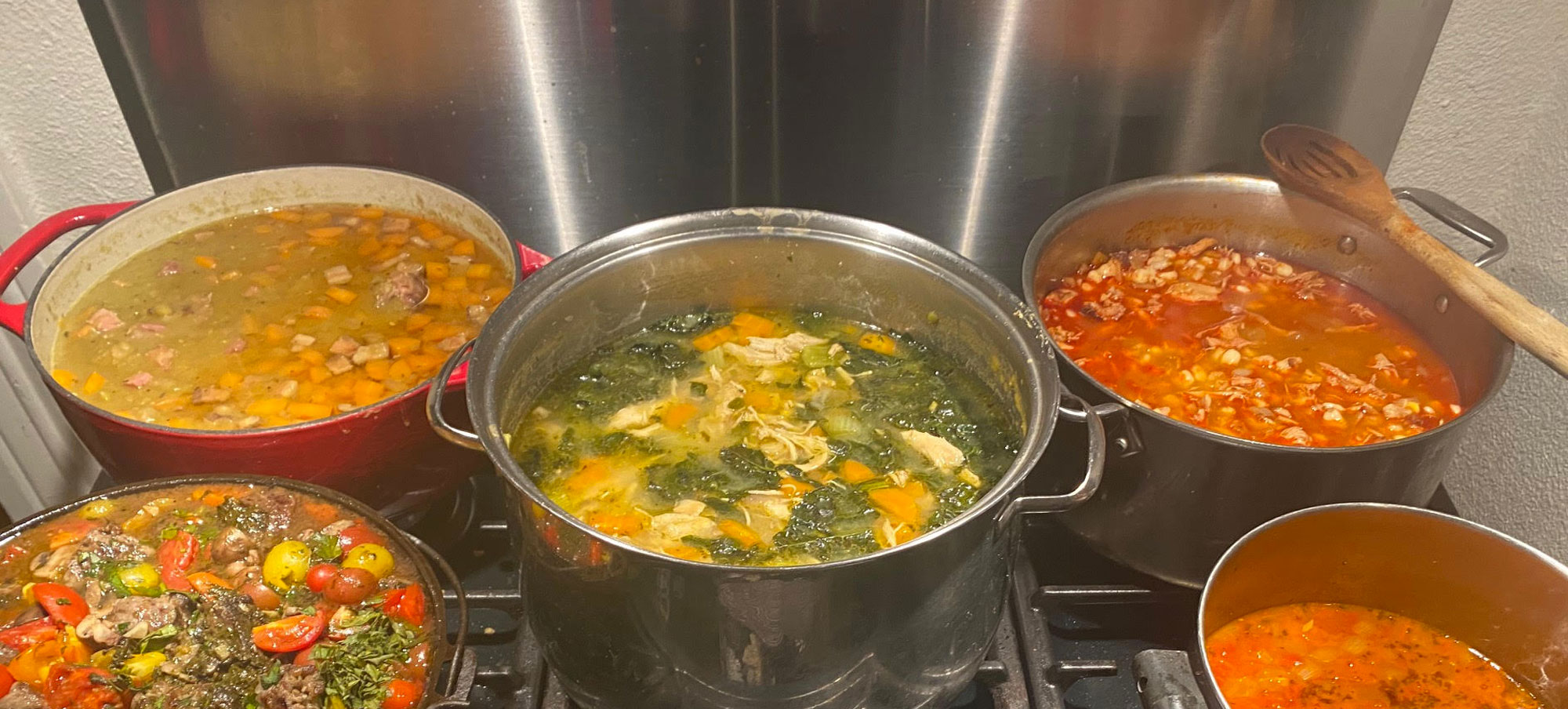Bringing Ingredients Together
There are very few foods that are as easy to customize with what you have on hand, that are as nourishing and comforting as a good bowl of soup. Maybe that’s why soup is such a big crowd pleaser at community meals in cohousing communities across the globe. At Portland’s newest cohousing community, Cathedral Park Cohousing we’re still forming community, but we’re already cooking—using the broth of our values and our shared vision alongside spices, herbs, vegetables, and other ingredients to create community among our members. See what we did there with the metaphor?
 There are about as many recipes for soups as there are stars in the nighttime sky. But, you don’t need a soup of the day cookbook for the entire year to make a pot of delicious satisfaction for yourself, your family, or your entire community. You just need a reasonable number of ingredients that play nice, a big pot, and some basic skills.
There are about as many recipes for soups as there are stars in the nighttime sky. But, you don’t need a soup of the day cookbook for the entire year to make a pot of delicious satisfaction for yourself, your family, or your entire community. You just need a reasonable number of ingredients that play nice, a big pot, and some basic skills.
Foundations
The French have mirepoix (two parts diced onion, one part each of carrot and celery), most Italian soup recipes start with the same mix plus garlic, and Creole and Cajun cooks employ the “Holy Trinity” (swap out the carrot for bell pepper). The various cuisines of South Asia, South East Asia, China, Japan, and Korea have multiple variations on a similar theme—some employing shallots, others ginger, or cilantro stems, or lemongrass, or scallion.
The main thing to consider when beginning to build a pot of soup is that you want to select at least a small variety of aromatic vegetables, cut them to a consistent size and cook them in a bit of fat until they begin to soften and color slightly. Then you are ready to add other ingredients. Adding herbs and spices (and salt to develop flavor) at this point allows them to release their aromatic oils before you add your liquids. If you are adding meat that you would like to brown, you can also do that at this point or skip ahead to adding in stock or other liquids. Also, at this point you could add flour and cook it in a bit (to get rid of the raw flour taste) with the fat and other ingredients in the pan if you’re hoping for a thickened soup later.
Stock or Other Liquids
Depending on the type of soup you are craving, your dietary preferences/requirements, and what you have on hand, you can add any one of dozens of different liquids at this point to turn a bunch of herbs, meat, vegetables, and spice from a saute into a soup or stew—think canned or boxed broths, dashi (instant or homemade), canned tomato products, clam juice, dairy or nondairy milks, etc. Just carefully consider what flavors go well together, or throw caution to the wind and hope for the best.
Flavors, and Fillers, and Toppings, Oh My
This is also a good time to add in fillers like beans or lentils, vegetables and meats that you don’t want browned (like the broccoli in a cream of broccoli soup) or vegetables or meats that you’ve roasted in the oven while preparing the base for your soup. But, if you’re planning on adding rice or pasta to your soup—you’re better off waiting until the soup has developed flavor and is only twenty or so minutes away from serving so they don’t turn to mush.
Once the soup is all cooked through and the flavors have developed it’s time to bring it across the finished line. If you’re looking for a fully or partially pureed soup, break out the blender (and be careful, you’re working with hot liquid). Adjust your seasonings, put in any last minute herbs that you want to taste fresh (think basil, or dill, or fennel fronds), and serve with appropriate toppings (think parmesan, yogurt or sour cream, chives, etc.).
Join Us for Good Cooking
If after reading all of this you aren’t ready to start experimenting with creating your own soups out of whatever you have around, there’s absolutely no shame in reaching for a trusted cookbook or trying a recipe off the internet. Sometimes we learn best by following in the well-worn paths of others.
We’ll be posting recipes and food-related metaphorical content to this blog as we continue to bring together the rest of our members en route to breaking ground in the Cathedral Park neighborhood of St Johns in Portland, Oregon. Join us at a Learn About session to hear what ingredients we already have put together and what you might bring to the stew pot of community.